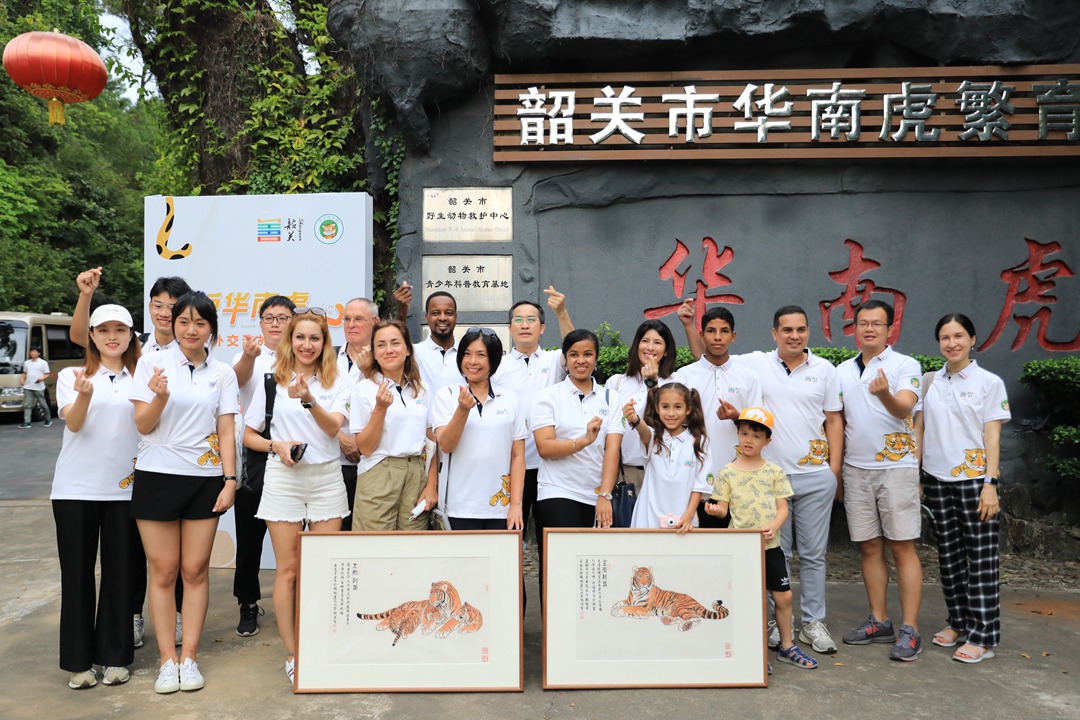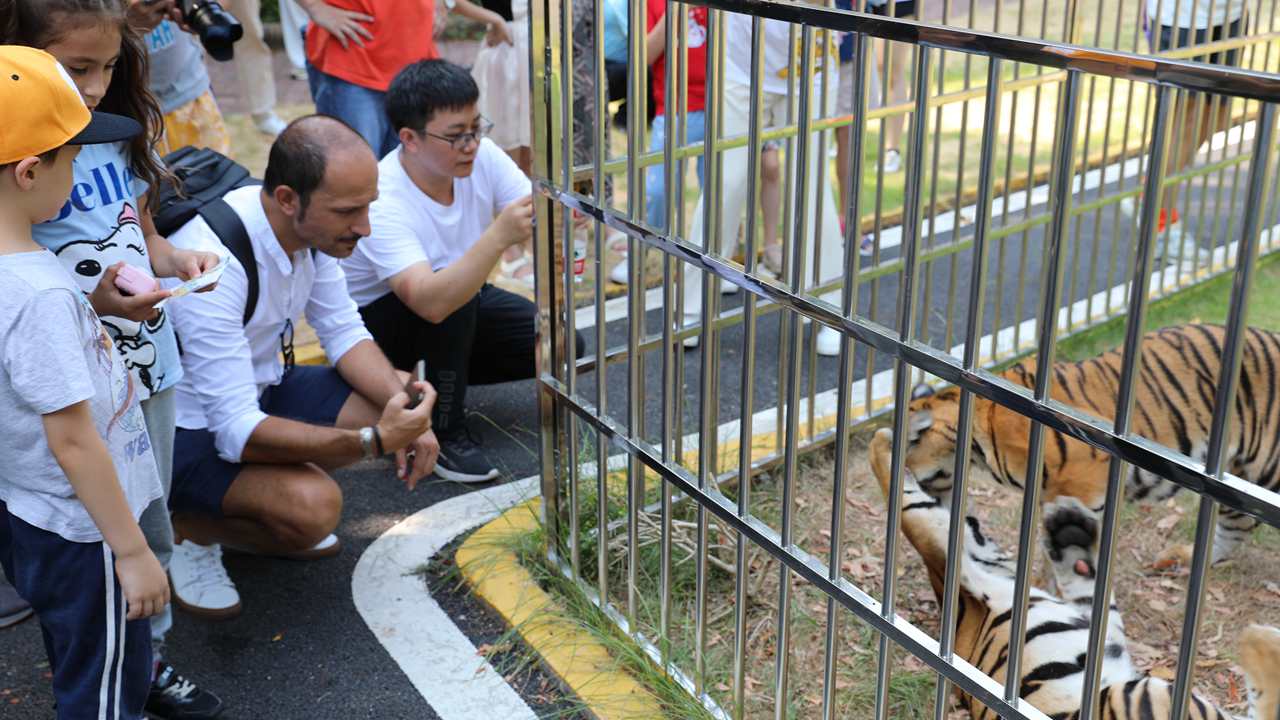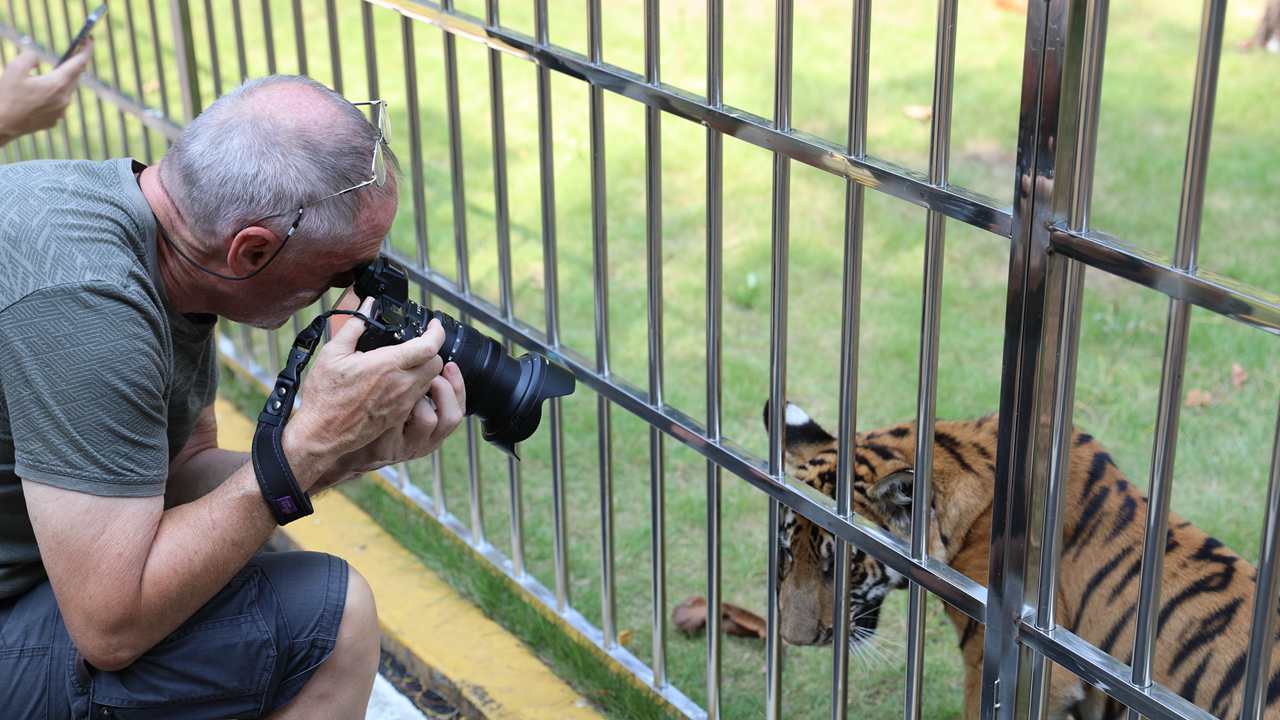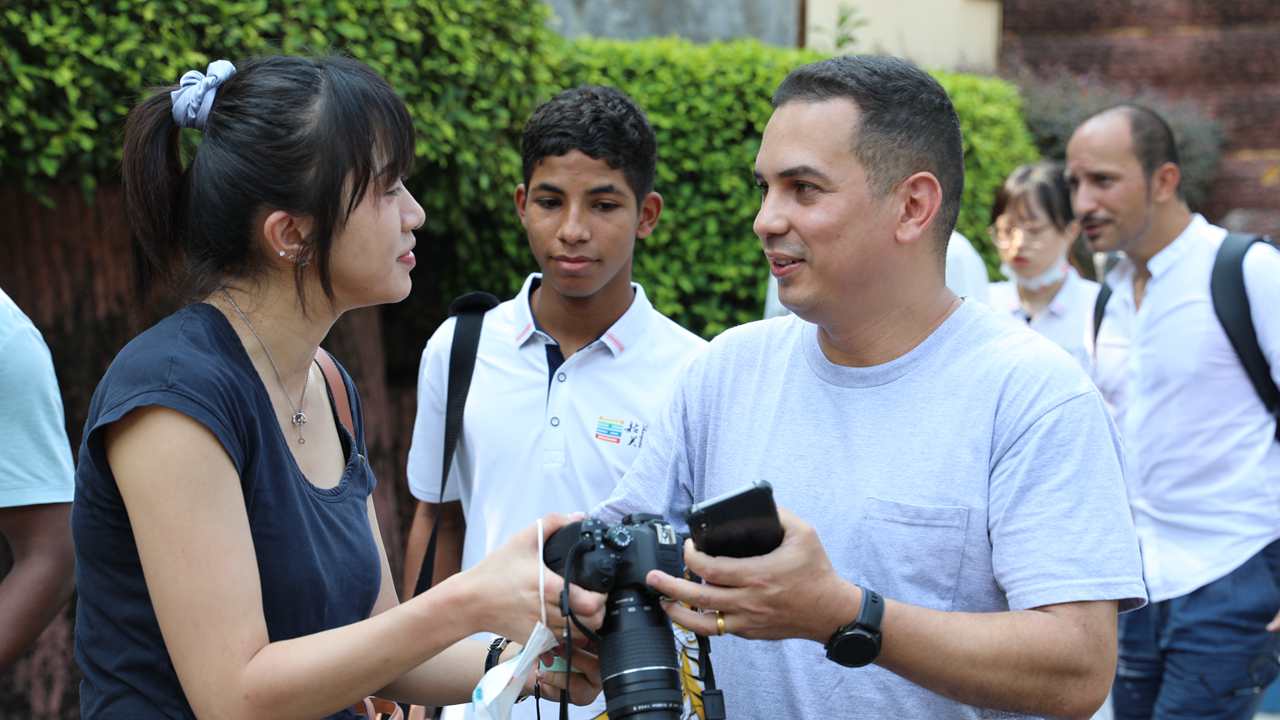Intl. Tiger Day marked by 'tiger guardians'
Protection of threatened tiger species — especially of the critically endangered South China tigers — has become a hot topic in the Year of the Tiger.
Six “tiger guardians” — a tiger breeder, scientists, an architect, an artists and an international volunteer — marked the annual International Tiger Day on Friday night through sharing their insights and experiences on why South China tigers become critically endangered and what has been and will be done to protect them at a story-sharing event held at the South China Tiger Breeding and Research Base in the city of Shaoguan in northern Guangdong Province.

Participants pose for a photo at the gate of the South China Tiger Breeding and Research Base in Shaoguan City, northern Guangdong Province, on July 29 before a story-sharing event on protection of tigers began. The event marked the International Tiger Day, which falls on July 29 every year. Lin Songtao
Lei Shengqiao, a head breeder at the base, kicked off the story-sharing night with spectacular news — Mengmeng, a female South China tiger, gave birth to a male cub in the early hours of July 21, increasing the total number of tigers at the base to 14.

Matteo Convertino gives a speech based on his experience with the critically endangered species and his ecosystem engineer know-how at the story-sharing event. Lin Songtao
Italian ecosystem scientist and engineer Matteo Convertino, who is an associate professor at the Institute of Environment & Ecology of Tsinghua Shenzhen International Graduate School and a participant of a trip to the breeding base organized by Shenzhen Daily on May 22, gave a speech based on his experience with the critically endangered species and his ecosystem engineer know-how.
“Vegetation and water resources play an important role in the preservation of South China tigers, as well as many other predator animal species,” Convertino said. “We know that there are certain nature reserves in Shaoguan which are working on introducing the tigers to the wild. What we also need to pay attention to is that the western and southern parts of Shaoguan have the largest and healthiest forest areas in Guangdong Province, forming an ecological corridor where South China tigers are supposedly going to move.”
“I truly believe that nature’s symphony is about the balance between stress and evolution,” Convertino said. “Evolution can be played out by genetics and population consideration, but the stress component is really about the presence and maintenance of keystone vegetation and resources that we can control directly at the ecosystem scale.”

Participants of the trip take an interest in South China tiger twins Lianhua and Furong at the breeding base on July 29. Lin Songtao
Lan Tianming, head of a research group on the genome of endangered animal species at BGI Research, stated that gene management may make a great difference in enhancing the effective reproduction of South China tigers.
“We carried out research on the genome of major tiger species in the world and found out that there are about 600 harmful mutations in the genome of South China tigers, which may cause some diseases and affect individual development,” Lan said.
“However, inbreeding — though notorious in the eyes of biologists — can help eliminate the harmful genetic mutations. So, what we can do is not just merely stop them from inbreeding but use a scientific gene management method to both reduce the harmful effects of inbreeding and mutations and to help the species regain population.”
American photographer Thomas Edison Harvey showed the audience some photos of South China tigers he took during the trip in May. “It is our responsibility as humans to protect the endangered species and also prevent more species from being listed as endangered,” he said, citing the protection of the then-endangered bald eagles in the U.S. as an example.

American photographer Thomas Edison Harvey takes a photo of a tiger. Lin Songtao
Harvey brought his wife Gigi to revisit the female tiger twins Lianhua and Furong, which are currently 7 months old at the base’s South China tiger kindergarten, Saturday. “Seven months and look at the strength and the size of the paws. They are wild animals after all,” he said in admiration.
Jesse Guimaraes from Brazil, who works for the Industrial Engineering Department of Tsinghua University, also captured the twins’ adorable moves on his camera at the base.

Jesse Guimaraes (R) shows the photos of South China tigers he took to another participant of the trip. Lin Songtao
“I felt very privileged to have the chance to meet the critically endangered South China tigers with my family,” Guimaraes said. “We are able to see today that lots of efforts have been done in China to not only protect but to also enhance the quality of life of South China tigers.”
Patricia Raharizanany Avotriniaina from Madagascar also spoke highly of the event. “The tiger is one of my favorite animals. I am so grateful to listen to so many amazing speeches on the protection of the environment and South China tigers,” she said.
The six speakers at the story-sharing event were commended as the “Guardians of South China Tigers” by the management office of the Guangdong Yuebei South China Tigers Nature Reserve in Shaoguan and the Shenzhen Project Care Foundation, which hosted the event.
According to Tong Qiao, secretary general of Shenzhen Project Care Foundation, the foundation and China Ping An Group have already raised 1.86 million yuan (US$275,838) from donation of over 15,000 people at a fundraising event on the protection of the South China tigers, which was launched during this year's Spring Festival.